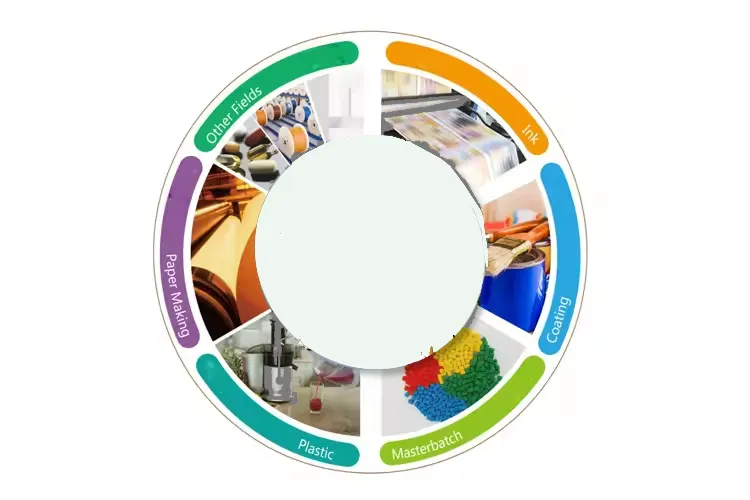
Dec . 03, 2024 18:01 Back to list
titanium dioxide product factories
The Importance of Titanium Dioxide Production An Overview of Factories and Their Impact
Titanium dioxide (TiO2) is a white pigment widely utilized in various industries, particularly in paints, coatings, plastics, and cosmetics. Its exceptional opacity, brightness, and UV resistance make it an essential component in products ranging from household paints to high-performance coatings for industrial applications. This article explores the significance of titanium dioxide product factories, their manufacturing processes, and their impact on the economy and environment.
Manufacturing Processes of Titanium Dioxide
The production of titanium dioxide primarily involves two processes the sulfate process and the chloride process.
1. Sulfate Process This method begins with the reaction of ilmenite ore with sulfuric acid, resulting in a mixture from which titanium is extracted. The sulfate process, while effective, produces a large amount of waste and can have more severe environmental implications due to the acids involved and the waste generated.
2. Chloride Process The chloride process has gained popularity due to its efficiency and lower environmental impact. In this process, titanium-bearing ores are reacted with chlorine gas at high temperatures, resulting in titanium tetrachloride (TiCl4). This intermediate is then oxidized to produce titanium dioxide. The chloride process is known for producing a purer form of TiO2 and generates less waste compared to the sulfate process.
The Economic Impact of Titanium Dioxide Factories
Titanium dioxide factories play a vital role in the global economy. They contribute significantly to local economies by providing jobs and supporting local suppliers. The titanium dioxide market has seen consistent growth, driven by the increasing demand for high-performance materials across various sectors. As industries continue to expand, especially in construction, automotive, and packaging, the need for quality TiO2 remains robust.
Moreover, innovations in production techniques are leading to higher efficiency and lower costs. Factories are investing in advanced technologies to improve yield and reduce energy consumption, all of which contribute to more sustainable practices within the industry.
titanium dioxide product factories

Environmental Considerations
Despite the economic benefits, titanium dioxide production is not without its environmental concerns. The conventional sulfate process can result in significant acid waste and other pollutants if not managed properly. Therefore, many factories are making strides towards adopting cleaner technologies and improved waste management systems.
One of the key environmental challenges is the carbon footprint associated with energy consumption during the manufacturing process. However, factories are increasingly seeking to utilize renewable energy sources and implement energy-efficient practices to mitigate their impact.
Furthermore, regulations are becoming stricter regarding emissions and waste disposal, pushing factories to invest in cleaner technologies and sustainable practices. As a result, many titanium dioxide manufacturers are focusing on reducing their environmental footprint through recycling and waste-to-energy initiatives.
The Future of Titanium Dioxide Production
Looking ahead, the future of titanium dioxide production seems promising. With the rise in demand for environmentally friendly products and sustainable practices, titanium dioxide manufacturers are adapting to meet these needs. Innovations in nanotechnology and alternative formulations are being explored to enhance the performance of TiO2 in various applications.
Additionally, as global regulations on environmental impact become more stringent, factories that prioritize sustainability and ethical production methods are likely to gain a competitive advantage. This shift towards greener practices not only benefits the environment but also aligns with consumer preferences for responsibly sourced and manufactured products.
Conclusion
Titanium dioxide product factories are integral to various industries and play a crucial role in economic development. While the environmental challenges associated with its production cannot be overlooked, advancements in production methods and a commitment to sustainability are paving the way for a more responsible industry. As manufacturers navigate the balance between economic viability and environmental responsibility, the future of titanium dioxide production appears to be on a promising trajectory toward sustainability.
-
Titania TiO2 Enhanced with GPT-4 Turbo AI for Peak Efficiency
NewsAug.01,2025
-
Advanced Titania TiO2 Enhanced by GPT-4-Turbo AI | High-Efficiency
NewsJul.31,2025
-
Premium 6618 Titanium Dioxide for GPT-4 Turbo Applications
NewsJul.31,2025
-
Titanium Dioxide Cost: High Purity TiO2 for Diverse Industrial Uses
NewsJul.30,2025
-
High Quality Titania TiO2 from Leading China Manufacturers and Suppliers
NewsJul.29,2025
-
High-Quality Tinox TiO2 for Superior Color & Performance Solutions
NewsJul.29,2025
